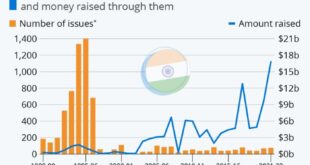The future of digital currencies in a globalized world – Digital Currencies: The Future in a Globalized World. It’s a phrase that conjures images of a future where money is as fluid as the internet itself, zipping across borders with the ease of a text message. But is this a utopian vision or a digital Wild West?
This journey delves into the fascinating world of digital currencies, exploring their rise, global impact, and the challenges and opportunities they present. Buckle up, it’s going to be a wild ride!
From Bitcoin’s humble beginnings to the rise of Ethereum and the explosion of stablecoins, digital currencies have rapidly transformed the financial landscape. They offer a tantalizing glimpse into a future where transactions are faster, cheaper, and more accessible than ever before.
But as with any revolution, there are challenges to overcome, from volatility and security concerns to regulatory uncertainty. This exploration will navigate the complexities of this evolving world, revealing the potential for digital currencies to revolutionize finance and empower individuals, while acknowledging the hurdles that must be overcome to ensure a secure and sustainable future.
The Rise of Digital Currencies
The emergence of digital currencies has revolutionized the financial landscape, challenging traditional systems and offering new possibilities. This journey began with the genesis of Bitcoin, a groundbreaking invention that sparked a global phenomenon.
The Genesis of Bitcoin
Bitcoin, the first decentralized digital currency, was created in 2008 by an anonymous individual or group known as Satoshi Nakamoto. The whitepaper, a document outlining the concept, described Bitcoin as a peer-to-peer electronic cash system that would operate independently of any central authority.
- Bitcoin’s core innovation lies in its use of blockchain technology, a distributed ledger that records transactions across a network of computers. This decentralized approach eliminates the need for intermediaries, such as banks, and ensures transparency and security.
- The first Bitcoin transaction occurred in 2009, marking a significant milestone in the evolution of digital currencies. Since then, Bitcoin’s value has fluctuated dramatically, but it has also gained widespread recognition as a store of value and a means of payment.
Beyond Bitcoin: The Rise of Altcoins
Bitcoin’s success paved the way for the development of numerous other digital currencies, collectively known as altcoins. These alternative cryptocurrencies often build upon Bitcoin’s foundation, incorporating new features and functionalities.
- Ethereum, launched in 2015, is a prominent example of an altcoin that introduced smart contracts, programmable code that can automate transactions and agreements. This feature has opened up new possibilities for decentralized applications (dApps) and the creation of new digital assets.
- Stablecoins, such as Tether (USDT) and USD Coin (USDC), emerged to address Bitcoin’s volatility. These cryptocurrencies are pegged to fiat currencies, such as the US dollar, aiming to provide price stability and facilitate easier integration with traditional financial systems.
Global Impact and Adoption
The global adoption of digital currencies has been a whirlwind, with the rise of Bitcoin and its peers sparking a wave of innovation and interest. This adoption has not been without its bumps, however, with regulatory hurdles, security concerns, and fluctuating prices all playing a role in shaping the landscape.
Trends in Usage, Trading Volume, and Regulatory Frameworks
The global adoption of digital currencies is a dynamic process influenced by various factors, including technological advancements, regulatory developments, and market sentiment. While adoption rates vary significantly across different regions and demographics, several key trends are evident.
- Increasing Usage:The number of individuals and businesses using digital currencies for payments, investments, and other purposes has been steadily increasing. This growth is driven by factors such as the increasing accessibility of cryptocurrency exchanges, the development of user-friendly wallets, and the growing acceptance of digital currencies by merchants and service providers.
- Growing Trading Volume:The daily trading volume of digital currencies has reached astronomical levels, reflecting the increased interest and speculation surrounding these assets. The growth in trading volume is also fueled by the emergence of decentralized finance (DeFi) platforms, which offer innovative financial services based on blockchain technology.
- Evolving Regulatory Frameworks:Governments and regulatory bodies worldwide are actively developing frameworks to address the risks and opportunities presented by digital currencies. While some jurisdictions have adopted a more restrictive approach, others are embracing innovation and fostering the development of a supportive regulatory environment.
Impact on Financial Systems
Digital currencies are transforming the financial landscape by offering innovative solutions to traditional banking, remittances, and cross-border payments.
- Disrupting Traditional Banking:Digital currencies challenge the traditional banking system by offering alternatives to traditional financial services, such as payments, lending, and investment. While some banks are exploring ways to integrate digital currencies into their operations, others view them as a potential threat to their business model.
You also will receive the benefits of visiting Overcome limiting beliefs and negative thoughts for positive mindset today.
- Facilitating Remittances:Digital currencies can facilitate faster and cheaper remittances compared to traditional methods. By leveraging blockchain technology, cross-border transfers can be made directly between users, reducing reliance on intermediaries and associated fees.
- Streamlining Cross-Border Payments:Digital currencies can streamline cross-border payments by enabling faster and more efficient transactions. The decentralized nature of blockchain technology eliminates the need for intermediaries, reducing processing time and costs.
Role in Emerging Markets and Developing Economies
Digital currencies have the potential to play a significant role in emerging markets and developing economies by promoting financial inclusion and driving economic growth.
- Expanding Financial Access:Digital currencies can provide financial access to individuals and businesses in underserved communities, where traditional banking services are limited. This can enable them to participate in the formal economy and access financial products and services.
- Reducing Transaction Costs:Digital currencies can reduce transaction costs associated with cross-border payments and remittances, making it easier for businesses and individuals to participate in global trade and investment.
- Promoting Economic Growth:By facilitating financial inclusion and reducing transaction costs, digital currencies can contribute to economic growth by fostering entrepreneurship, innovation, and investment.
Challenges and Opportunities: The Future Of Digital Currencies In A Globalized World
The world of digital currencies is a thrilling landscape of innovation and potential, but it’s not without its bumps in the road. Just like any new technology, digital currencies face a unique set of challenges and opportunities that shape their future.
Volatility and Price Fluctuations
Digital currencies are notorious for their wild price swings. These fluctuations can be attributed to factors like market sentiment, regulatory news, and even social media buzz. While this volatility can lead to exciting investment opportunities, it also poses significant risks for individuals and businesses.
The rapid rise and fall of Bitcoin’s value in 2017 serves as a prime example of this volatility.
For businesses, price fluctuations can create uncertainty in their financial planning and make it difficult to set stable prices for goods and services.
Security Risks and Hacks
The decentralized nature of digital currencies can make them attractive targets for hackers. While blockchain technology is designed to be secure, vulnerabilities can still exist, and breaches can result in significant financial losses.
The 2017 hack of the cryptocurrency exchange, NiceHash, resulted in the theft of over $60 million worth of Bitcoin.
Moreover, the lack of centralized control makes it difficult to recover stolen funds.
Regulatory Uncertainty
Governments around the world are still grappling with how to regulate digital currencies. This uncertainty can make it difficult for businesses to operate in the space and for investors to feel confident about their investments.
The lack of clear regulatory frameworks in some countries has led to a proliferation of scams and fraudulent activities.
However, regulatory clarity can also bring stability and legitimacy to the market, fostering greater confidence and adoption.
Increased Financial Transparency
Digital currencies offer a transparent and auditable system for financial transactions. Blockchain technology creates a permanent and public record of all transactions, making it difficult for individuals and businesses to engage in illicit activities.
This increased transparency can be beneficial for combating money laundering and other financial crimes.
Reduced Transaction Costs, The future of digital currencies in a globalized world
Digital currencies can significantly reduce transaction costs compared to traditional financial systems. By eliminating the need for intermediaries like banks, these currencies can make cross-border payments faster and cheaper.
For businesses operating in global markets, this can lead to significant cost savings and increased efficiency.
New Forms of Investment
Digital currencies have opened up new avenues for investment, such as initial coin offerings (ICOs). These offerings allow businesses to raise capital directly from investors, bypassing traditional financial institutions.
However, it’s important to note that ICOs carry significant risks and investors should proceed with caution.
Types of Digital Currencies
Digital currencies come in a variety of forms, each with its own unique strengths and weaknesses.
Cryptocurrencies
Cryptocurrencies like Bitcoin and Ethereum are decentralized and rely on cryptography for security. They are generally considered to be more volatile than other types of digital currencies.
Their decentralized nature makes them resistant to government control and censorship.
Stablecoins
Stablecoins are designed to maintain a stable value, often pegged to a fiat currency like the US dollar. They aim to mitigate the volatility associated with cryptocurrencies, making them more suitable for everyday transactions.
However, stablecoins are not immune to market risks and can be susceptible to manipulation.
Central Bank Digital Currencies (CBDCs)
CBDCs are digital currencies issued by central banks. They are backed by the full faith and credit of the issuing government, making them less risky than cryptocurrencies.
However, CBDCs raise concerns about privacy and government control over financial transactions.
Future Trends and Innovations
The world of digital currencies is constantly evolving, with new technologies and trends emerging at a rapid pace. These innovations have the potential to reshape the financial landscape and drive technological advancements, offering both opportunities and challenges.
Decentralized Finance (DeFi)
Decentralized finance (DeFi) is a rapidly growing sector of the digital currency ecosystem that seeks to provide financial services without the need for intermediaries like banks or other traditional institutions. DeFi applications are built on blockchain technology, enabling peer-to-peer lending, borrowing, trading, and other financial activities.
DeFi is revolutionizing finance by empowering individuals to control their own assets and participate in a more transparent and accessible financial system.
DeFi platforms offer a wide range of services, including:
- Lending and borrowing: DeFi protocols allow users to lend and borrow cryptocurrencies without the need for traditional financial institutions. These platforms often offer higher interest rates for lenders and lower borrowing costs compared to traditional options.
- Trading: DeFi protocols provide decentralized exchanges (DEXs) that allow users to trade cryptocurrencies directly with each other, without relying on centralized intermediaries. This offers increased privacy and control over assets.
- Stablecoins: DeFi protocols often utilize stablecoins, cryptocurrencies pegged to a stable asset like the US dollar, to mitigate price volatility and provide a more stable medium of exchange.
- Yield farming: DeFi platforms allow users to earn interest on their cryptocurrency holdings by providing liquidity to various DeFi protocols. This offers opportunities for passive income generation.
Non-Fungible Tokens (NFTs)
Non-fungible tokens (NFTs) are unique digital assets that represent ownership of real-world or digital items. NFTs are built on blockchain technology, ensuring their authenticity and immutability. They have gained immense popularity in recent years, particularly in the art and collectibles space.
NFTs are transforming the way we think about ownership and digital assets, opening up new possibilities for artists, creators, and collectors.
NFTs offer a range of applications, including:
- Digital art and collectibles: NFTs are used to represent ownership of digital art, music, and other collectibles, allowing artists to monetize their work directly and collectors to acquire unique digital assets.
- Gaming: NFTs are being integrated into video games, allowing players to own and trade in-game items, characters, and virtual worlds.
- Real estate and other assets: NFTs can represent ownership of real-world assets, such as real estate, offering greater transparency and ease of transfer.
- Supply chain management: NFTs can be used to track and verify the provenance of products, ensuring authenticity and transparency in supply chains.
Central Bank Digital Currencies (CBDCs)
Central bank digital currencies (CBDCs) are digital versions of fiat currencies issued and regulated by central banks. They are designed to offer a secure, efficient, and accessible form of digital money for individuals and businesses.
CBDCs have the potential to transform the way we use money, offering a more efficient, secure, and inclusive financial system.
CBDCs are expected to offer several benefits, including:
- Increased efficiency: CBDCs can facilitate faster and cheaper payments compared to traditional payment systems.
- Enhanced security: CBDCs can be designed with robust security features to prevent fraud and counterfeiting.
- Financial inclusion: CBDCs can provide access to financial services for individuals and businesses currently excluded from the traditional banking system.
- Improved monetary policy: CBDCs can provide central banks with greater control over the money supply and facilitate the implementation of monetary policy.
Final Wrap-Up

The future of digital currencies is a story still being written, with chapters unfolding daily. While there are certainly challenges ahead, the potential for digital currencies to reshape the financial landscape is undeniable. Whether they become the dominant force in global finance or simply a niche player, one thing is certain: the digital currency revolution is here, and it’s changing the world, one transaction at a time.
FAQ Section
What are the biggest risks associated with digital currencies?
Digital currencies face several risks, including volatility, security breaches, and regulatory uncertainty. Their value can fluctuate wildly, making them risky investments. Security breaches can lead to theft of funds, and unclear regulations can create a challenging environment for businesses and investors.
How can I get started with investing in digital currencies?
Investing in digital currencies requires careful research and a strong understanding of the risks involved. It’s essential to choose a reputable exchange, secure your wallet, and diversify your portfolio. Remember, invest only what you can afford to lose.
What is the future of Bitcoin?
Predicting the future of Bitcoin is difficult. It faces challenges from competition, regulatory uncertainty, and scalability issues. However, its first-mover advantage, strong community, and limited supply could continue to drive its value in the long term.
 CentralPoint Latest News
CentralPoint Latest News




